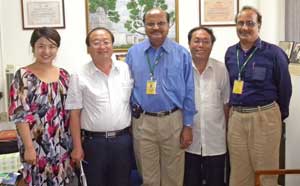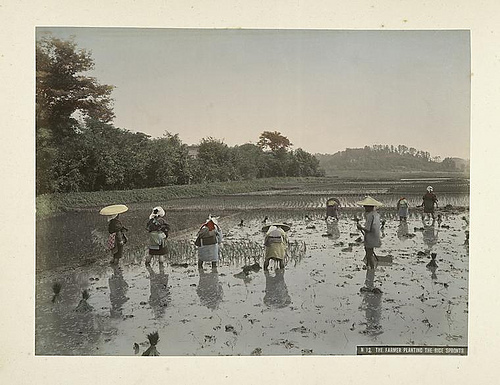- To a hammer, everything is a nail; Decanter magazine bemoans loss of sake breweries in Japan.
- One door closes, another one opens; “price winning” Croatian wines.
- Why go to Kew when you can tour with Google streetview?
- Slideshow on genebanks and climate change adaptation in Ethiopia. Wish I could hear the words.
- Canadians! Your heritage crops and breeds need you.
- How best to dry banana slices in Ethiopia.
Nibbles: Chickens!, Nigerian R&D, Obesity, Neglected species,
- Henderson’s Handy-Dandy Chicken Chart. Parochial: only one naked.
- “Local farmers hold key to ending hunger“. Q&A with Institute of Agricultural Research and Training, Nigeria.
- Selected papers on Food & Obesity, free from the Journal of Public Health Policy.
- UK academic promotes underutilised species shock.
A millet is a millet is a millet. Not
It’s been all over the news 1 that a new hybrid millet from China is going to solve Africa’s food problems. Even our friends at CIAT think so. Nowhere does it say in the endlessly reproduced press release, however, what kind of millet we are talking about. Pearl? Broomcorn? Finger? Foxtail? Proso? 2 What? Intensely annoying. Anyway, cut a long story short, it turns out to be foxtail millet, Setaria italica. We know because the “father of hybrid millet,” Zhao Zhihai, President of the Zhangjiakou Academy of Agricultural Sciences, Hebei visited ICRISAT recently, and the information people there wrote up the visit, and took a photo to immortalize it.

But, as far as I know, foxtail millet is not much grown in Africa, so this statement in the press release is dubious to say the least:
“Millet is staple food in many African countries. The success of the ZHM’s pilot plantation promises good prospects for its mass production in Africa,” said Zhang Zhongjun, assistant to the FAO representative to China.
Pearl millet and finger millet are indeed staple foods in many African countries, but not foxtail of that ilk. Which is not to say that it could not become a staple. After all, it tastes better than teff, which, however, one is bound to point out, is not often called a millet.
“We helped some local farmers to grow the hybrid millet and promised to buy their harvests. But they refused to sell after harvests as they said the new millet tastes much better than their traditional millet, called teff,” Liu told Xinhua.
And that, dear reader, is why we have Latin names.
Satoyama in peril?
It may not be the thing that’s at the top of people’s agendas in Japan at the moment, but one does wonder what the long-term effect of the tsunami will be on the satoyama of the region, their agrobiodiversity and the people who maintain it. 3 The BBC series on the satoyama from a few years back is no longer available on the BBC’s website, but some of the documentaries can be found elsewhere. 4

Back to Balinese rice production
Luigi goaded me into watching Stephen Lansing’s presentation on Balinese rice production, and I’m glad he did. It gives me the opportunity to make a couple of points.
A questioner, at about 1.08, finds it fascinating that the system Lansing described “works for monoculture crops,” and asks whether it might apply in any way to the monocultures of the American midwest. She’s using monoculture to mean single species, as do many others people. But it prompts a reflection on the genetic diversity of the Balinese rices. Lansing does say at one point that much of the diversity has been lost, although some survives up in the hills. And the introduction of the high-tech package based on very uniform improved rice cultivars, starting with the canonical IR-8, failed because it didn’t take Balinese practices into account. And yet those practices too depend on uniformity.
The Balinese system works because farmers synchronize their plantings, so that after harvest there’s nothing left for rice pests to eat and nowhere for them to go. But that requires all the local varieties to have the same maturity period. Indeed, the fundamental unit of the Balinese calendar, the master clock, Lansing said, was the growth cycle of old Balinese rice varieties. I guess that the same would hold true today. Neighbouring farmers must grow varieties with similar maturity dates, otherwise all the complexity associated with synchronizing planting and sharing water goes out of whack at the end of the season.
If the farmers all decided to plant a genetically uniform modern cultivar, but stuck with their older rituals for timing the rice cycles, would the system work as before?